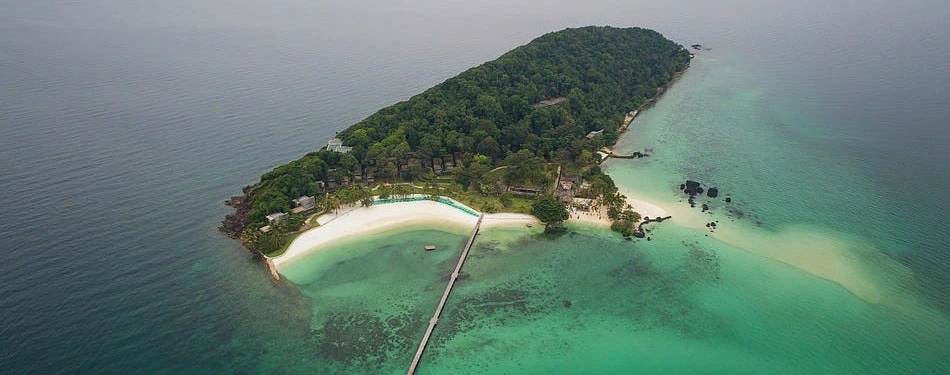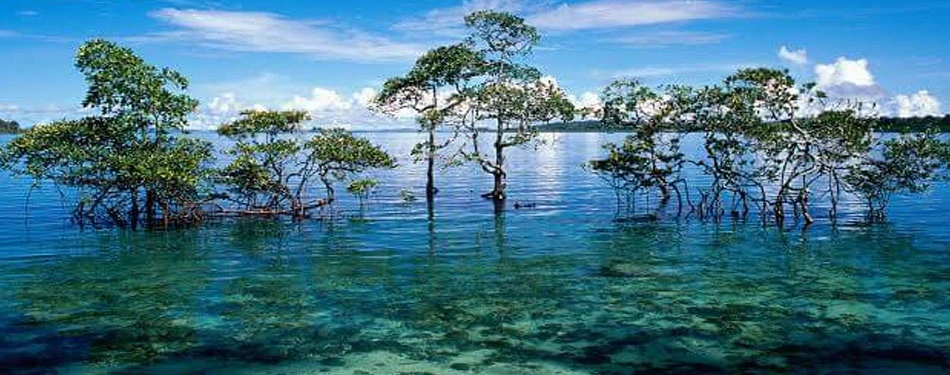Exploring the Largest Island of Andaman and Nicobar

Discover the enchanting North Andaman Island, the largest island of Andaman and Nicobar.
This breathtaking destination is perfect for exploring pristine beaches, lush green
forests, and diverse wildlife. Whether you're looking for adventure or relaxation, North
Andaman offers some of the best places to visit in Andaman, making it a must-see on your
travel list. Join us as we explore the natural and cultural treasures of this
magnificent island.
The Largest Island in Andaman and Nicobar
The largest island of Andaman and Nicobar is North Andaman Island, part
of a group of
islands that are not only a naturalist's paradise but also a historically rich
territory. These islands serve as a home to a fascinating mix of flora and fauna, some
of which are endemic to the region. North Andaman, with its diverse ecosystems and
untamed nature, offers an unspoiled escape from the hustle and bustle of city life.
Geography and Climate
North Andaman Island, like the rest of the archipelago, is characterized by a tropical
climate. The weather remains mild and pleasant for the most part of the year, making it
an ideal destination for tourism all year round. Geographically, it is rugged, with
several hillocks and dense tropical forests that are interspersed with beautiful beaches
and creeks.
Historical Context
The Andaman and Nicobar Islands have a rich history. Once used as a penal colony during
the British Raj, the islands have a dark past intertwined with stories of brave freedom
fighters. The largest island in Andaman and Nicobar also echoes these historical
elements, providing insights into a significant era in Indian history.
Click here for more details
Flora and Fauna
The islands of Andaman are rich in biodiversity. The forests of North Andaman are dense
with tropical trees and are home to an array of wildlife. The region is particularly
noted for its bird species, many of which are unique to the islands. The surrounding
marine life is equally vibrant, with coral reefs and an abundance of fish species,
making it a popular spot for snorkeling and diving.
Cultural Significance
The indigenous tribes of the Andaman Islands, including the Sentinelese, Jarawas, Great
Andamanese, and Onges, contribute to the rich cultural tapestry of the region. These
tribes have lived on these islands for thousands of years and offer a glimpse into a way
of life that is vastly different from the mainland. While interaction with some tribes
like the Sentinelese is prohibited, their presence adds a unique cultural aspect to the
islands.
Best Places to Visit in Andaman

When exploring the largest island in Andaman and Nicobar, several must-visit
spots offer a mix of history, nature, and adventure:
● Saddle Peak: The highest point in the archipelago, Saddle Peak
offers breathtaking views of the surrounding islands and waters.
● Ross and Smith Islands: Connected by a narrow sandbar, these twin
islands offer picturesque beaches and are ideal for swimming and sunbathing.
● Kalipur Beach: Famous for turtle nesting, Kalipur Beach offers a
rare opportunity to witness turtle hatching during the season.
● The Forest Museum: Located in Mayabunder, it provides insights
into the forestry practices and the types of wood used in the island.
Adventure Activities
Adventure enthusiasts will find North Andaman to be a thrilling playground. The
region is renowned for its:
● Trekking: Numerous trails lead through lush forests to beautiful
overlooks.
● Snorkeling and Diving: The clear waters and rich marine life make
it a top destination for underwater exploration.
● Bird Watching: With its unique avian population, bird watching is
a popular activity.
Sustainable Tourism
As tourism continues to grow, sustainable practices are essential to preserving the
natural and cultural heritage of the islands. Efforts are being made to ensure that the
development of tourist facilities and activities does not adversely affect the local
environment and communities.
Check out
Conclusion
The largest island of Andaman and Nicobar, North Andaman Island, offers a unique blend of
natural beauty, adventurous activities, and a deep historical context. It stands out as
a must-visit destination for anyone looking to explore the enchanting islands of
Andaman. Whether you are a nature lover, history enthusiast, or adventure seeker, North
Andaman provides a captivating experience that is sure to leave an indelible mark on
your travels.
By understanding and appreciating the natural and cultural richness of the largest island
in Andaman and Nicobar, visitors can ensure that they contribute positively to the
region while enjoying all that it has to offer. This beautiful island not only offers a
window into a unique part of the world but also reminds us of the importance of
conserving such pristine environments for future generations.

